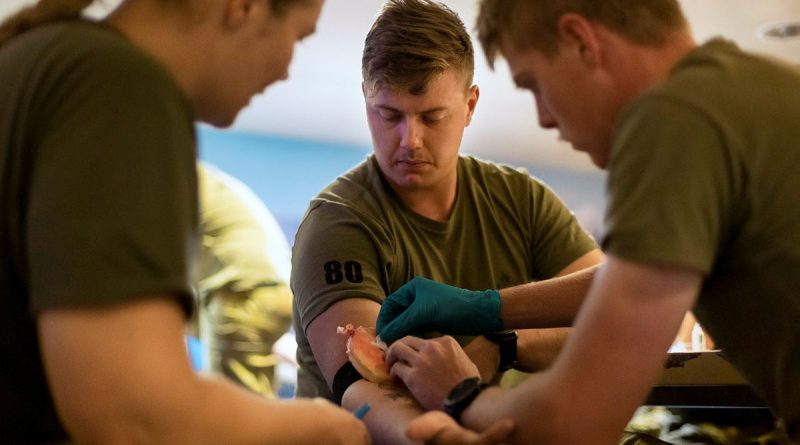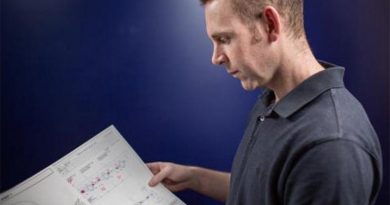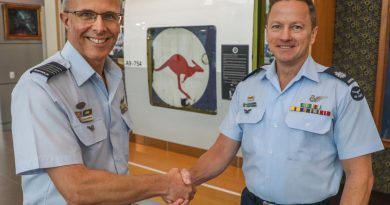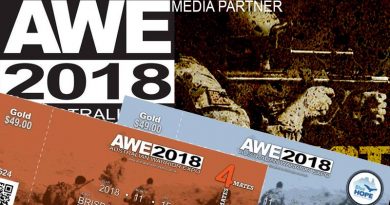Soldiers practise combat first aid at sea

Army first aid personnel are returning from sea equipped and ready to step back into the field.
CAPTION: Private Samuel Sutcliffe, centre, from 1st Battalion, Royal Australian Regiment, volunteers as a patient during combat first-aid training. Story by Lieutenant Amy Johnson. Photo by Leading Seaman Sittichai Sakonpoonpol.
While embarked in a Navy vessel for Indo-Pacific Endeavour, the Army developed innovative training to ensure members had access to the same high-quality medical qualification courses they have ashore.
Since deploying in mid-October, 24 Army personnel completed a combat first-aid course on board HMAS Adelaide.
Facilitator Lieutenant Jack Burns said the training enabled soldiers to provide immediate lifesaving medical support to injured personnel.
“People who have finished this course gain the skills to provide more advanced treatment and administer medications in a combat environment,” Lieutenant Burns said.
The course addresses a mix of theory and practical elements, including cannulation, intra-muscular injection, tourniquets and appropriate use of medication.
Personnel from 1st Battalion, Royal Australian Regiment (1RAR) and 2nd Battalion, Royal Australian Regiment (2RAR) completed the course.
“Delivering the course at sea meant we could take a load off medical units back home, and generate a capability so personnel are ready to go into whatever situation might require them,” Lieutenant Burns said.
Private Joseph Wren, of 2RAR, who learned to cannulate a casualty for the first time, said it was good to be able to qualify at sea.
“I am more confident in my ability to provide medical assistance after finishing this course,” Private Wren said.
“Doing this at sea means we will have doubled the number of combat first aid-qualified people in my section.”

CAPTION: Private Joseph Wren from 2nd Battalion, Royal Australian Regiment, practises cannulating on board HMAS Adelaide. Photo by Leading Seaman Sittichai Sakonpoonpol.
Lieutenant Burns said the course was usually run in an open environment, with blank firing, pyrotechnics and other elements, which they couldn’t have on the ship, so the facilitators had to be innovative.
“We had to get creative and tap into resources across different departments. In the end, we were able to create a range of different simulated environments involving various vehicles and props,” Lieutenant Burns said.
Private Wren said course participants benefited from the experience of facilitators on board.
“There were combat first-aid personnel who had been on a deployment, so their willingness to share their insights and experiences was really valuable and will help us when we get out into the field,” Private Wren said.
Commander Landing Forces of the Australian Amphibious Force Colonel Douglas Pashley said innovative training approaches enabled embarked forces to return with valuable skills.
“Our people are getting opportunities to train in ways they wouldn’t usually get to do at sea. We are going to get 24 extra combat first aiders who’ve had a really high standard of training as a result of this trip,” he said.

CAPTION: Members of Army’s 1st and 2nd Battalion, Royal Australian Regiment conduct combat first aid training. Photo by Leading Seaman Sittichai Sakonpoonpol.
.
.

.
.





